Fortean and Mutology Researcher David Perkins Dies
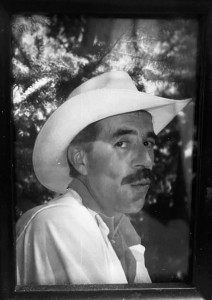
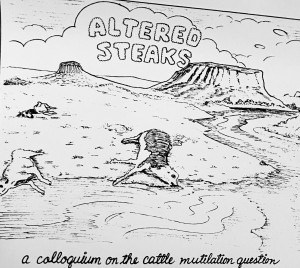
David Perkins, one of the true intellectuals involved first in 1970s’ cattle mutilations research, has died. Born on October 18, 1945, growing up in Colorado, Perkins passed away on August 20, 2023, in Santa Fe, New Mexico. An uncompromising smoker, Perkins died suddenly of lung cancer.
Getting some schooling at Yale University, having been involved in the mutes studies since 1975, Perkins was often asked to write book introductions, appear on radio shows and podcasts to comment, and was involved in the pre-podcast Altered Steaks: A Colloquium on the Cattle Mutilation Question (1982), by David Perkins (a/k/a “Izzy Zane”), Lewis Macadams, and Tom Clark. Cover art by Tom Clark.
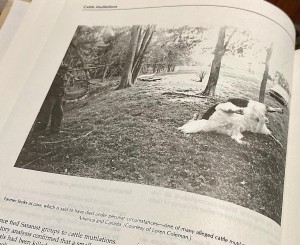
Cattle mutilations were discussed in most Fortean books at the end of the 20th Century, as here in Jerome Clark’s Encyclopedia of Strange and Unexplained Physical Phenomena (Gale Research, 1992). Photo taken by Loren Coleman at the site of a cattle mutilation site investigation in New England.
Perkins, as he writes in his “Colloquium” book, was drawn into the mutilation question by 1975 reports out West, the Snippy case in Colorado, and then the surprising Travis Walton alien abduction event. Mutology was a “new science” about studying cattle mutilations, which were the killing and mutilation of livestock (and black helicopter reporters) under unusual, usually bloodless circumstances.
Strangely, or perhaps not, Perkins died exactly nine years to the day after Tom Adams died, on August 20, 2014. (See “Mutology Data and Deaths: Tom Adams and Gary Massey.”)
The news began breaking of Perkins’ death in social media on Sunday, first from Greg Bishop and other of Perkins’ friends.
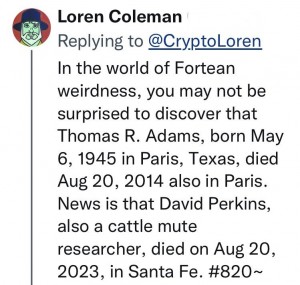
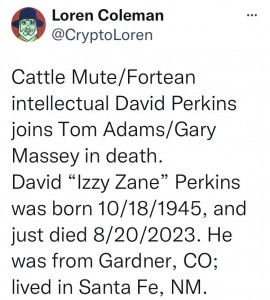
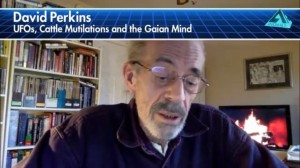
David Perkins worked hard, and talked often about “mutology.”
Perkins often added his thoughts to Christopher O’Brien’s books.
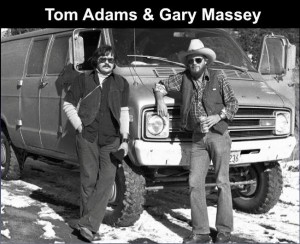
David Perkins was one of the true pioneers of “mutology” (along with Tom Adams, Chris O’Brien, Gary Massey, Jerry Clark, Ed Sanders, Jim Keith, Linda Howe, Mark A. Hall, myself, and others). As such, David wrote a remembrance of Tom Adams. O’Brien shared it, as a look at the man, the myth, the mentor…who was Tom Adams. It says a great deal about David Perkins too.
The Late Great Tom Adams
Thoughts on the Passing of Thomas R. Adams (1945-2014) [to his friends and colleagues]
By David Perkins
— Easter 2015
I know you all were shocked and saddened to learn of Tomʼs death in Paris, Texas on August 20, 2014. Iʼm still having trouble coming to grips with the heart-breaking loss of my good friend and colleague. My mind has been flooded with so many wonderful memories of Tom. One particularly vivid recollection is a journey we took to Dulce, New Mexico in April, 1978 to examine a freshly mutilated cow. I recall combing a remote dusty pasture for clues with Tom, Gary Massey, my wife Cari and State Policeman Gabe Valdez. Itʼs hard to believe that theyʼre all gone now.
Gabe was especially excited that day. “Youʼre not going to believe this one! It had to have been dropped from a pretty great distance.” he told us on the way to the site. Sure enough, the cow certainly looked “crumpled”. The poor animalʼs left front and hind legs were broken and its left horn was driven deep into its skull. Gabe kicked the cow to show how its backbone was broken. The rectum, genitals and udder had been removed with what appeared to be neat circular incisions. A small piece of the lip had been removed. “look at the clamp marks ! Iʼve never seen that before,” Gabe said, shaking his head slowly. He pointed to the hind legs slightly below the knee. We could see indentions in the hide about two inches wide and a quarter inch deep. “Ah, if only mutes could talk,” Tom muttered to no one in particular.
Tom and I had gravitated to each other in the mid-1970s. I had decided to join the chase after the Western mute blitzkrieg of 1975. Tom and Gary had first come west in 1970, when they drove from Texas to do follow-up research on the famous “Snippy the Horse” case in Colorado. In my early investigations, it didnʼt take long to become aware of Tom and Gary. Virtually every sheriff, vet or rancher I interviewed said: “You oughta get hold of them fellas from Texas.” They were clearly a step ahead of me. I soon called Tom and that call changed the course of my life.
Tom began publishing Stigmata in January, 1978. It quickly became the flagship “go-to” publication for anyone pursuing the mute mystery. As a clearinghouse for mute information, Stigmata set the bar high for integrity and thoroughness … light on speculation and heavy on facts and solid journalism. “Consider everything. Believe nothing,” Tom was fond of saying, in the true Fortean tradition. Everyone felt comfortable quoting Stigmata, from FBI agents and US Senators to the most incredulous ufologists.
“Tom ʻn Gary” as the dynamic duo was invariably referred to, were the pioneers and leading lights in the fledgeling study that we dubbed (tongue- in-cheek) “Mutology”. We thought that being professional “mutologists” sounded a little classier than “weird people who get a kick out of looking at dead cows”. Speaking of tongue-in-cheek, Tom and Gary knew that a sense of humor was an essential attribute for any “paranormal” researcher. Without humor they felt, one could not maintain the necessary perspective to keep oneself from going completely around the bend. As anyone who knew them will attest to, they were some funny guys.
This is not to say that Tom didnʼt take his “calling” seriously. He was a voracious reader and an absolutely indefatigable researcher. Like all great investigators, Tom had an intuitive understanding of synchronicity. Seek and ye shall find. Let the unconscious mind hold sway occasionally. Connections will be made, dots will be connected and new insights will present themselves. Tom knew that research is essentially a creative process, no matter how tedious it could be at times.
Even with his own pressing work to do, Tom was exceedingly generous with his time, energy and resources. When I asked him for information on some arcane topic, he would drop what he was doing and assemble a bundle of material on the subject. Iʼd receive it in the mail in a few days. Apparently he was like that for anybody who asked for something from him.
As far as I know, Tom never did make the leap into the internet era. In the late 1990s Tom and Gary visited me at my house in Santa Fe. Our friend and fellow researcher Linda Howe had joined us for the evening. I concocted a plan to give Tom a demonstration of the wonders of world-wide web research. My hunch was that Tom could be a wizard of the internet. He was intrigued, but skeptical. He grumbled about the steep learning curve and the cost of the technology, subscription services, etc. He wasnʼt a Luddite, but definitely old-school. For him, the telephone, the U.S. mail and the Xerox machine at his job were just fine for getting the results he was after.
Tom was a first-rate intellect and probably the only person Iʼve ever known who could be said to have a “photographic memory.” His total recall of dates, places and names was truly uncanny. Tomʼs encyclopedic knowledge covered many fields, especially music. He was an aficionado of modern music and his taste was exquisite. He enjoyed scouring used record stores and yard sales for obscure items. He would then make delightful compilation tapes which he would send along to me periodically. Over time Iʼve noticed that most of my research colleagues have a strong affinity for music. Perhaps itʼs because music is a bridge to unseen worlds.
One of the things Iʼve most admired about Tom was his sense of modesty and humility. His unassuming attitude was refreshing in a field too often crowded with self-proclaimed “experts” and ego-driven self-promoters. Tom was low-key and steady. At the time he left the scene, he was regarded as one of the countryʼs foremost paranormal researchers. He wasnʼt inclined toward aggrandizement. If the situation required it, he could step up and give a brilliant speech to the masses. He preferred to work behind the scenes and slightly below the radar.
Tomʼs ideal natural habitat was the Ozark UFO conference in Eureka Springs Arkansas. Along with conference founder Lou Farish, Tom and Gary were highly instrumental in creating the unique ambiance of the legendary Lone Star Bar. To many attendees, the Lone Star hospitality suite was the beating heart of the conference, the place where lecture- weary ufologists could go to have a drink (or two) and unwind. It was a true “speak easy” where the nitty gritty information was exchanged. Tom thrived there. He liked talking with people one-on-one in a casual atmosphere. For someone so well-informed, Tom still preferred to listen rather than talk. That was the Tom Adams we knew and loved, but there was a Tom that many people didnʼt know so well.
Over the past several years, whenever Tomʼs name comes up, Iʼm almost always asked: Why did Tom drop out of the field so abruptly? What happened? My answer is that weʼll probably never know for sure. Tom was a complex, tightly-wound person who maintained a barrier between the world and his private emotional life. Iʼve heard him described as “notoriously reclusive” and similar descriptions. I didnʼt see him that way, but he did maintain strict boundaries. Some subjects of a personal nature clearly made him uncomfortable. The only reason I would venture into this uncharted territory is that whatever caused Tom to drop out may provide a major clue as to the nature of the phenomenon that he pursued so assiduously for over 30 years.
Many theories abound but I must emphasize that they are all merely speculation. Conspiracy-minded researchers see Tomʼs hasty retreat as evidence that he had been threatened and told to “back off”. Being the fearless and persistent investigator that he was, he may have gotten too close to the truth. According to this line of thought, Tom may have posed a problem for powerful interests and their agendas, be they terrestrial, alien or some combination thereof. This is the stuff of science fiction movies and spy novels, plausible but unlikely in my opinion.
Another prevalent theory is that Tom simply reached “burn out” after 30 years. Perhaps one day he came to the realization that paranormal research was a quixotic foolʼs errand. The quest and the challenge are great motivators, but ultimately one must face the possibility that some things might be simply unknowable. Itʼs a notion that I have entertained, but a hard pill to swallow for truth-seekers. Itʼs difficult to accept defeat or “calf rope” as Gary Massey used to call just giving up. Iʼd venture to say that most serious researchers have heard that little voice saying: Why are you doing this? Shouldnʼt you be doing something more productive, with a greater likelihood of success? What important things in life are you ignoring due to your “obsession”? Maybe Tom had such a moment of reckoning.
One school of thought is that Tom came face to face with something very “dark” and terrifying at the heart of the mutilation/UFO phenomenon. Evidence of cult activity has been part of the meme to this day. Altared Steaks you could say. This dark presence might even be something from another order of existence. This scenario is slightly bolstered by rumors that some of Tomʼs associates after he left the research community were apparently of the born again Christian persuasion. In my current investigations, Iʼve been surprised by the number of people Iʼve interviewed who believe that mutilations and UFOs are the work of the Devil. Itʼs worth noting that seasoned writer/researcher John Keel came to think of himself as a “demonologist” rather than a ufologist.
Knowing Tom, I canʼt help but feel that if any of the aforementioned scenarios were true, he would have been compelled to somehow get that information to his friends and colleagues. Perhaps he felt that “it” was something that everyone had to discover for themselves or that having such knowledge would endanger us. Again, pure speculation.
On a more mundane level it has often been suggested that Tomʼs “demise” began after the break-up of his marriage to Christa Tilton. To my knowledge, this was Tomʼs first and only foray into the choppy waters of romantic love. Iʼd always wondered if Tom and Christa had been legally married. Typically he was vague about it. I recently located the records and indeed, they were married on Dec. 18, 1987 and divorced on
April 22, 1991. Both records originated from Lamar Texas. For reasons unknown, Tomʼs official obituary makes no mention of the marriage… SNIP…When my wife Cari died of cancer in 1992, they hopped in Garyʼs big van (The Thang) and made the long drive from Texas to Colorado to attend her funeral and offer their support in my time of need. It was a gesture I greatly appreciated. Gary was “Gary” and Tom was the same old Tom that Iʼd known – thoughtful, considerate, kind, perceptive and funny.
Tom may have been a little worse for the wear after his marriage experience, but I saw no evidence of a larger downward spiral. He was active and vigorous in the research world throughout the 1990s. In 2000 we started work on Mute Testimony , a collected works of both of our writings and publications. We were including new material, photos, interviews, etc. Tom was enthusiastic about the project. In early 2002 I contacted him to see if he was making any progress on the preface that heʼd agreed to write. In February, 2002 I received my last communication from Tom. In a letter dated 2-21-02 Tom said: “My sincere apologies for dropping the ball. Iʼve been dropping a lot oʼ balls … itʼs survival mode. He went on to say that “thenceforth and forthwith” I had his full authorization to be the executer of his writings and material and to use them any way I wished. I was stunned.
===
Some of the following books are ones in which you can read David Perkins’ introductions:
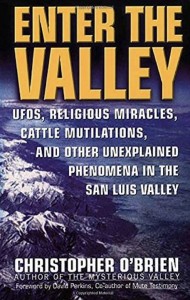
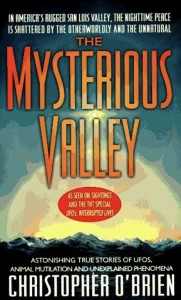
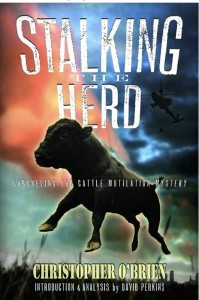
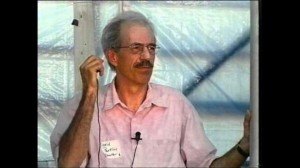
**********
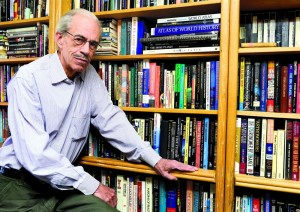
Cattle mutilation is no bull, says Santa Fe resident David Perkins. He’s been studying this strange phenomenon since the 1970s. He’s written magazine and newspaper articles about it — one recent story even won him a journalism award in Colorado — and co-authored a 1982 book called Altered Steaks. He also has spoken at who knows how many forums, including one organized by a U.S. senator.
But after all these decades, Perkins, 69, says he really doesn’t know who or what is responsible for the mutilations.
“I honestly think there’s something very significant behind it. I don’t know what,” he said, laughing, during a recent interview at a downtown Santa Fe coffee shop. “But I know that there’s something there. … It’s hard to dispute that there’s something unusual going on, just by the sheer number of cases, news reports, interviews, law enforcement and on and on. It’s clearly a cultural phenomenon. And that’s how I’ve approached it from the very beginning.”
Cattle mutilation, he said, is “almost a Rorschach test of the American psyche, you might say.”
Though there hasn’t been much talk about cattle mutilations in recent years, back in the mid-1970s there were constant news reports here and elsewhere about dead cows with body parts that witnesses said had been removed in what appeared to be mysterious ways.
“Ranchers reported finding their animals dead with sexual organs removed, blood drained, and missing some combination of ear, tongue, eye, udder or patch of skin,” Perkins wrote in the introduction of Stalking the Herd: Unraveling the Cattle Mutilation Mystery by Christopher O’Brien, published last year. “Rectums were frequently described as ‘cored out’ … the incisions were frequently described as being performed with ‘surgical precision.’ ”
Through the years, theories have abounded. Is this the work of UFOs? Strange cults? Some secret government project? Or some strange combination — a Satanic cult within the government?
Or is it just completely nuts? Is it something that only some kind of kook would pursue?
“I’m always battling the credibility issue, because it’s such a weird topic,” Perkins said in the interview. “It’s bizarre, scary, strange, kooky, whatever. But that hasn’t deterred me.”
Skeptics who mock tales of mutilations and all paranormal activity aren’t the only people who have questioned Perkins’ credibility. He’s also been dismissed by true believers of UFOs and those who embrace other mutilation theories — they say Perkins is too much of a skeptic.
“My conclusion after almost 40 years of devoting myself to this is that every theory has a fatal flaw,” he said. His insistence in pointing out those flaws gets him in trouble with those dedicated to advancing the theories. Perkins has had a pet theory of his own — that mutilations are connected with nuclear activity. This theory, too, has “fatal flaws” he said, but he still thinks “that may have some relevance.”
Perkins for decades has maintained homes in Santa Fe and in southern Colorado.
His obsession with cattle mutilations began in the mid-1970s after he moved with his wife at the time, Roberta Price, to Libre, a rural commune in Colorado’s Huerfano Valley. Perkins recently had graduated from Yale with a degree in American studies and political science. Price, now an intellectual property lawyer in Albuquerque, wrote a book about the commune called Huerfano: A Memoir of Life in the Counterculture (2004) and another about Libre and other communes called Across the Great Divide: A Photo Chronicle of the Counterculture (2010). Perkins took the cover photo for the latter.
A cattle mutilation occurred just down the road from his house at Libre, he said. It was the first mutilation scene Perkins had ever seen.
He described it in his introduction to Stalking the Herd. “The only evidence was a few drops of blood leading toward my home. I later learned from my local sheriff that since I was a relative newcomer to the area, I was briefly considered a suspect.”
A local newspaper editor told Perkins, “We think we know who did it. … those hippies up at Libre.” The editor didn’t know Perkins lived there.
“In those days, [Charles] Manson was still hanging in the air,” Perkins said, referring to the convicted mass murderer. “There was still that aspect of Mansonite hippie types, which was pervasive for awhile.”
At the time, Perkins was a musician (he later was in a Santa Fe group called The Dog Brothers) and a freelance writer; the latter profession he’s stuck with through the present. He said he started “a little file” on mutilations.
The file grew.
“One thing led to another, and I got more and more into it,” Perkins said. He made connections with local law enforcement officials investigating mutilations and interviewing ranchers whose cattle had been mutilated. “It just picked up steam. I thought, ‘This is a great story. And I’m going to solve it.’ ” Perkins laughed at himself before adding, “And I’m going to do it.”
In 1979, Perkins was the first speaker at a conference in Albuquerque about cattle mutilations organized by former astronaut and then U.S. Sen. Harrison Schmitt. “What other topic could possibly draw this motley crew into one room?” Perkins wrote in Stalking the Herd. “A moon-walking astronaut, FBI agents, state police, sheriffs and local police from around the country, Indian pueblo governors, tribal police chiefs, Los Alamos scientists, veterinarians, New Agers in robes, hippies, news media, spooky agent types, dusty ranchers in beat-up cowboy hats, independent researchers and, of course, ufologists of all stripes and colors.”
Shortly after Schmitt’s conference, then-Santa Fe District Attorney Eloy Martinez got a federal grant and hired retired FBI Agent Ken Rommel to investigate cattle mutilations all over New Mexico. He concluded “the vast majority of mutilations are caused by predators and scavengers.”
Rommel, who died in 2012, remained a skeptic. Years after his investigation, he told The New Mexican “I have a certain amount of sympathy for people whose lives are so dull and boring they have to get their kicks by fantasizing about the decomposition of dead animals.” (This was in 1994, a time when dozens of cattle mutilations had occurred in Northern New Mexico.)
Perkins, however, is skeptical of Rommel. He said he had a breakfast meeting with Rommel before he was officially appointed to head the investigation. Rommel had already made up his mind before he’d even started, Perkins said. He said Rommel told him at the breakfast that that cattle mutilations were “all baloney” and “creative journalism.”
Though Perkins considers Rommel’s investigation “lame,” he said, “I must say, in Rommel’s defense, the attitude of law enforcement in dealing with it at the time was that it was a public safety issue. People were shooting at helicopters in New Mexico and Colorado and Kansas and Nebraska.” (Some who live near mutilation scenes have reported hearing helicopters in the area.) “These vigilante groups were out running around at night, armed to the teeth. And that could have gone wrong easily.”
While there have been few if any news reports of cattle mutilations in New Mexico since the mid-’90s, up near Walsenburg, Colo., last summer there was a series of reported mutilations that got Perkins’ attention. He interviewed area ranchers, sheriff’s deputies and others and wrote a series of articles published by the weekly Huerfano World Journal. The paper recently announced that Perkins’ series won an award from the Colorado Press Association for best feature series in a weekly paper.
Perkins and O’Brien, the author of Stalking the Herd, are beginning work on a follow-up, tentatively titled “MuteSpeak: Stalking the Stalkers,” which will contain what Perkins says will be a deep analysis of the major theories about who or what is behind the mutilations.
“What Chris and I have going for us is a healthy skepticism and a sense of humor,” Perkins said.
Sunday Spotlight: Santa Fe man aims to solve mystery of cattle mutilations
- By Steve Terrell
The New Mexican - Updated
Follow CryptoZooNews
Not Found
The resource could not be found.